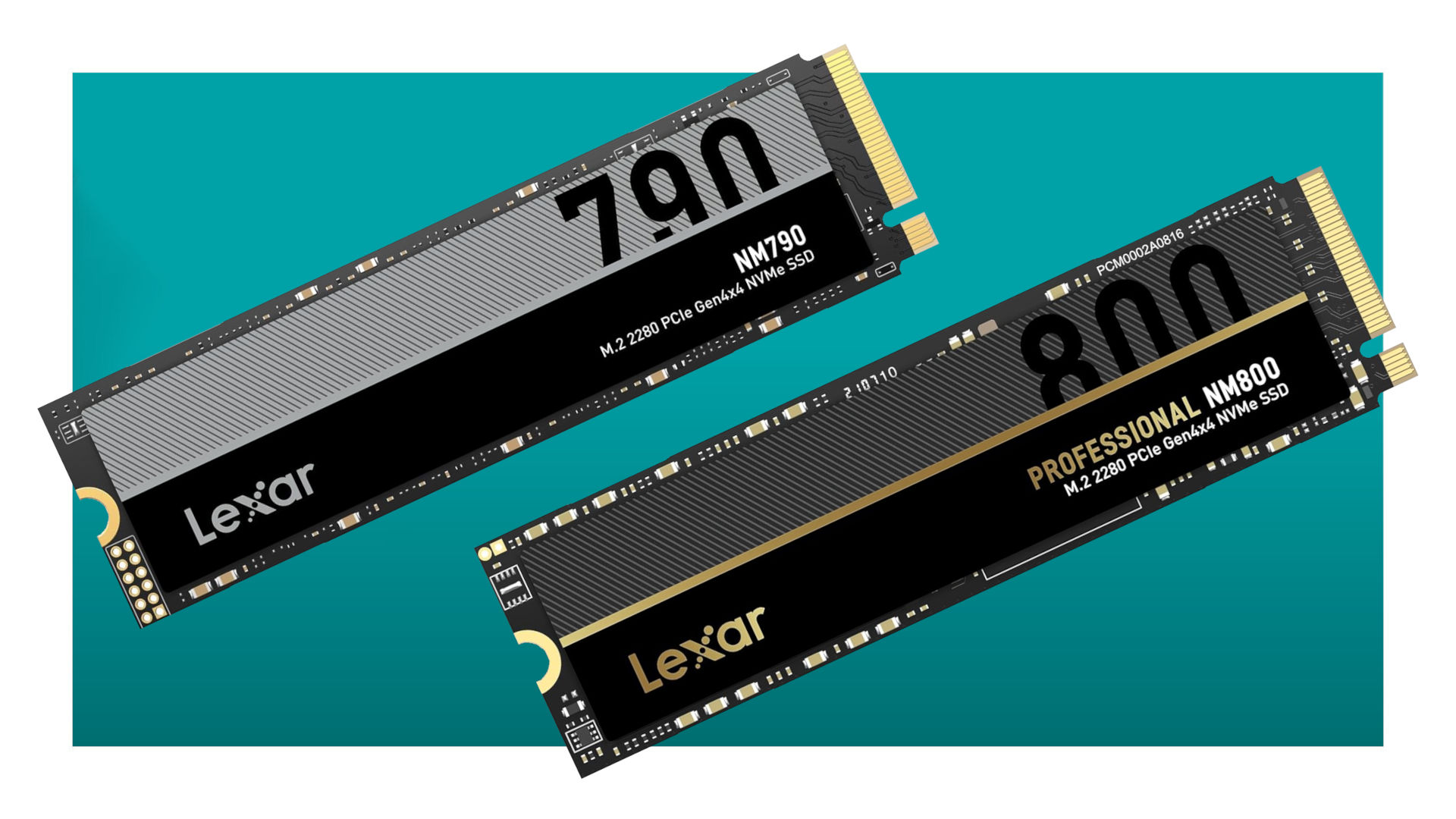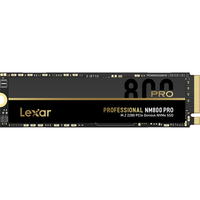With or without DRAM, both of these super fast 2 TB SSDs are great value for money at just 7 cents per GB
With the perfect balance of price tag and performance, you can't go wrong with either of these Lexar SSDs.

Lexar NM790 | 2 TB | NVMe | PCIe 4.0 | 7,400 MB/s read | 6,500 MB/s write | $153 $139.99 at Amazon (save $13.01)
This is pretty much the best value 2 TB SSD around right now, with an ideal balance of price tag and performance. If you need one with a heatsink, then they're $20 more on Amazon.
Price check: Newegg $149.99
Lexar NM800 Pro| 2 TB | NVMe | PCIe 4.0 | 7,500 MB/s read | 6,500 MB/s write | $249.99 $144.99 at B&H Photo (save $75)
On paper, it's very similar to the NM790, but the extra cash you need to hand over gets you 2 GB of DRAM. This really helps when writing huge amounts of data to the drive.
Price check: Newegg $190.75 | Amazon $154.99
Lexar's NM790 is a brilliant NVMe PCIe 4.0 gaming SSD, as it offers great performance for a very reasonable price, as we discovered when we reviewed the 4 TB version. It doesn't have the very latest flash memory and controller chips, but the whole setup is very balanced and Lexar has done a fine job of configuring everything to work well.
There are, of course, better gaming SSDs but they're more expensive and the NM790 should be more than quick enough for most gamers. What it doesn't have, though, is a very large cache. Let me explain.
NAND flash, the type of memory that's used in SSDs, isn't super quick, especially when being written to. So when you're trying to get lots of files copied from your PC's system RAM onto the drive, the data needs to be buffered somewhere to stop things slowing to a crawl. And the table that stores the locations of where everything is on the SSD also needs to be constantly updated.
So-called DRAM-less SSDs, like the NM790, use a portion of the host memory, or system RAM, for storing the tables, allowing them to be checked and changed far quicker than they would if they were kept in the flash memory. Such SSDs are further sped up by dedicating a portion of the flash memory as a pseudo-version of a faster NAND type, typically known as an SLC cache.
The NM790 has an SLC cache around 280 GB in size and as long as the amount of data required to be written doesn't exceed this, then the drive can copy and write everything at full speed. Once the cache is full, though, then the performance will typically fall by around 50% or so.
That SLC cache is more than big enough for most PC gamers' needs but if you use your rig for more than just gaming, and sustained write performance is important to you, then don't worry—the Lexar NM800 Pro might just be the perfect SSD for you.
That's because it comes with 2 GB of DDR4 RAM, and combined with the SLC portion of the flash memory, the total cache size is roughly double that of the NM790. In other words, the NM800 Pro will keep going at its full speed for a lot longer than the NM790. That DRAM also hosts the location tables, so you save a tiny bit of system memory, too.
However, the NM800 Pro's controller chip isn't quite as good as the NM790's, so you won't see the same level of sustained write performance.
If all of this talk about DRAM and caches is leaving you a tad bewildered, then here's a simpler breakdown. For PC gaming and general use, get the Lexar NM790. If you do a lot of AI stuff or transfer lots of big files around all the time (e.g. video editing), then get the Lexar NM800 Pro.
At just seven cents per GB of storage, both are really great value for money and the perfect SSD upgrade for any gaming PC.
The biggest gaming news, reviews and hardware deals
Keep up to date with the most important stories and the best deals, as picked by the PC Gamer team.

Nick, gaming, and computers all first met in 1981, with the love affair starting on a Sinclair ZX81 in kit form and a book on ZX Basic. He ended up becoming a physics and IT teacher, but by the late 1990s decided it was time to cut his teeth writing for a long defunct UK tech site. He went on to do the same at Madonion, helping to write the help files for 3DMark and PCMark. After a short stint working at Beyond3D.com, Nick joined Futuremark (MadOnion rebranded) full-time, as editor-in-chief for its gaming and hardware section, YouGamers. After the site shutdown, he became an engineering and computing lecturer for many years, but missed the writing bug. Cue four years at TechSpot.com and over 100 long articles on anything and everything. He freely admits to being far too obsessed with GPUs and open world grindy RPGs, but who isn't these days?



